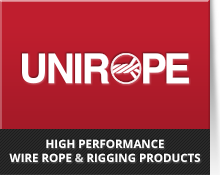One of the leading causes of sling failure and load drop is from inadequate sling cut protection. We offer an extensive range of cut protection from simple Protec™ Wear Pads including our Protec Ballistic™ Body Armor up to CornerMax® Sleeves and and CornerMax® Pads. With their unmatched versatility and strength, they are the ideal solution to protect your synthetic slings from cutting.
The CornerMax® Sleeve has the ability to fit around any shaped surface. CornerMax® Pads create a “tunnel” of cut protection known as the “no-touch zone” preventing the sling to even touch the load. Their load rating is 25,000-pound per inch of sling width (4,464 kg per cm).
To learn more about Unirope® cut protection options visit our website https://www.unirope.com/sling/abrasion-and-cut-protection or reach out to one of our branches in Alberta, Ontario or Quebec.



